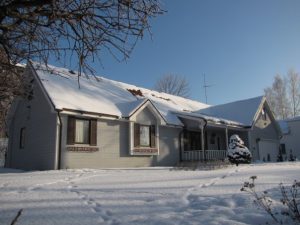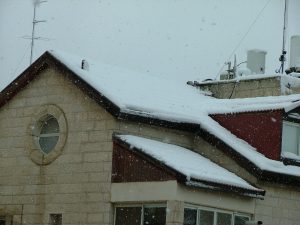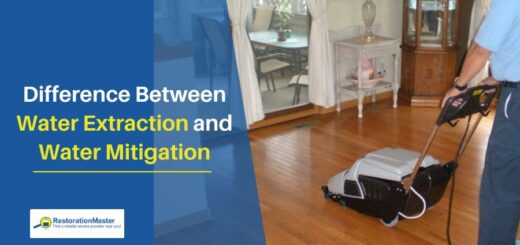Roof Maintenance Tips to Prepare for the Winter
Old Man Winter is set to make a visit in the upcoming months. Freezing rain and heavy snow will fall onto lawns and streets. Sheets of ice will form a temporary ice rink in puddles and on rooftops. There’s no stopping the winter cold from descending into the environment we inhabit. The one thing you can do to brace the cold is prepare for it. And your roof is no exception.
Once bursts of rain and falling snow accumulate onto the unprepped roof of your home in the midst of winter, fixing any flaws will be extremely difficult. Simply climbing onto the roof when ice spreads over the shingles is no easy task, let alone steadying yourself to accomplish the fix.
What do you do? Prepare your roof now, when the autumn weather is comfortably crisp and cool, allowing you or a professional roofer to inspect the shingles, gutters and flashing. Proper roof maintenance prior to the onslaught of the cold season is essential to protecting the interior of your home in the winter months, when the brisk outdoors is less than welcoming. You’ll be at ease knowing your roof is prepared for all the intense variances in freezing conditions that winter weather brings.
Inspect your roof twice a year: once in the fall and once in the spring. Prior to winter, an inspectionInspection is the careful examination and assessment of a pr... More will reduce the likelihood of freezing weather aggravating existing damage to your roof and causing additional destruction. Before summer, you will save your roof from leaks due to torrential downpours. Focusing on your roof now before winter sets in is key to prepping for the cold season.
Maintain the Surrounding Trees

Focusing on your roof now before winter sets in is key to prepping for the cold season.
Dead trees or trees with heavy branches that lean inward toward your home can eventually become a hazard. Lifeless tree limbs might crash into your home during continual rains or heavy snowfalls. Trees that lean toward your home can also be destructive. Branches could smash into your home’s shingles, windows or panels. These very same branches could become a bridge for rodents, like squirrels, or wild raccoons to cross and gain entry into your attic. Take care to trimTrim is the decorative or functional molding used to finish ... More overhanging branches to prevent these nuisances.
Clean Gutters
Especially during autumn months, it is critical that you check your open gutters for fallen leaves, debris, pine needles and twigs that could possibly block their path. Gutters are important for draining rainwater and melting snow. The attached downspouts are useful in guiding out water only when they function properly. If the downspouts are clogged, rainwater or thawed snow can overflow and cause water damage to your roof and the interior walls of your home.
Unclogging gutters is a tedious but simple process that will save you enormous trouble in winter months. You can use a ladder to reach the gutters. Or, you can invest in a hose-end attachment that is specifically designed to clean gutters. Once you have access to the large debris lodged in the gutter, remove the leaves and twigs with a trowel to clear the pathways. Smaller debris can be flushed out with a hose.
Notice whether or not the gutter water drains out of the downspout. If it doesn’t drain fully, the downspout could be clogged. The downspout can be unblocked with a tool, like a plumber’s snake. Flush out the downspout completely to ensure proper drainage. Limit additional debris from falling into your gutters by installing a leaf guard.
Install Attic Ventilation Structures
Snow and ice that remain on rooftops can warp the shingles, causing cold air to seep into your home. Attic ventilationVentilation is the process of exchanging or circulating air ... More systems allow air to circulate freely within the attic, thereby reducing the buildup of snow and ice on your roof. The result is financially beneficial. You significantly reduce your home’s energy costs, often by at least 30 percent.
Inspect Roof Flashing

Keeping your roof in optimum shape is a laborious task, but one well worth the trouble.
Roof flashing is a central component to your roof. Flashing is constructed either of galvanized metal or aluminum and strategically placed along areas where the roof intersects, such as joints, where a chimney interconnects, or along the edges of skylights. Flashing is an extra-protective mechanism designed to direct water to run off the slope of the roof. When flashing is missing or corroded, serious water damage can result, spelling disaster.
Gusts of high wind or freezing rains can cause flashing to uplift, loosen or tear. Prior to the winter, be sure to check the flashing for any signs of tearing or loosening. If you notice any flaws, replace the flashing. Replacing flashing is a small cost compared to replacing the entire roof or fixing the subsequent interior damage due to a winter roof leak. Take care to inspect the flashing before winter hits, and save yourself a bundle of expenses.
Replace Loose Shingles
If you notice any loose or missing shingles, replace them before the winter. How can you tell if a shingle is faulty? Asphalt shingles show signs of damage when the grit along the shingles falls into your gutters or if tabs are lost. You can also tell your roof’s shingles need replacement when you discover twigs, leaves or other debris lodged underneath them. Shingles are a central element in keeping your home dry. Regular maintenanceMaintenance is the routine care, inspection, and repair of a... More of the shingles on your roof is an inexpensive way to protect against the harsh elements.
Keeping your roof in optimum shape is a laborious task, but one well worth the trouble. If you’re not able to inspect your roof prior to winter, enlist the help of water damage restoration specialists. RestorationMaster is a trusted name in the Colorado Springs, CO area that offers years of experience in preventing water damage and eliminating its destructive effects.
Residing within a home includes the major responsibility of taking appropriate precautions to protect it and its occupants from the elements. Water, in its various liquid or frozen forms, can cause expensive and time-consuming devastation to roofs. Prepare for the worst that winter weather can bring. If you do experience water damage or leaking from your roof, contact a professional water damage restorationWater damage restoration is the professional process of clea... More service, like RestorationMaster, to expertly remove the excess water and restore the damage.












